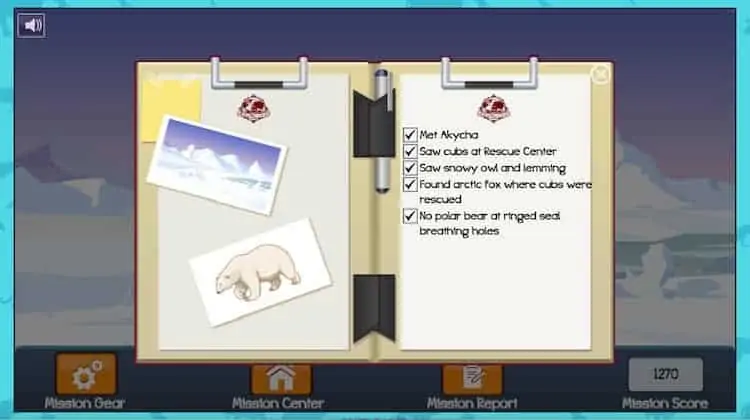The Arctic Circle is the northernmost part of the world and home to the North Pole. You may be surprised to know that this area actually includes parts of countries like Russia, Greenland, Norway, Sweden and even The United States!
But what is life like in the Arctic for the people and animals who live there? My preschooler and I were on a mission with Junior Explorers to find out.

Junior Explorers teaches kids all about the different ecosystems and the animals who inhabit it thru monthly missions delivered right to your door. This months mission: The Arctic Biome.
Our mission packet contained collectable cards, figurines, stickers and even postcards to teach us all sorts of interesting facts about the Arctic Tundra Biome.
5 Facts About Life In The Arctic Habitat
- Temperatures reach 10 degrees celsius in summer and -50 degrees celsius in winters.
- Humans have been living in the Arctic for more than 40,000 years including the Inuit, Sami, Nenets, Khanty, Evenki and Chukchi.
- The North Pole really is the top of the world. If you’re standing at the North Pole, every direction you look is south.
- No trees can grow in the Arctic but it’s home to more than 400 flowers and 17,000 plants.
- Spring and Summer are short lasting only between 50-60 days.
10 Facts About The Animals Who Live In The Arctic Biome
The Arctic is the natural habitat of many animals including Lemming, Snowy Owl, Walrus, Arctic Fox and Polar Bear.
- The Polar Bear is the largest land carnivore and can smell food up to 20 miles. Despite it’s size, this athletic animal swims 6mph and can swim up to 30 miles at a time.
- The Artic Wolf can live up to 10 years and weighs 75-120 lbs. It has a top speed of 46 mph and lives in total darkness for 2-5 months a year.
- The Arctic Wolf actually grows a second layer of fur while the Arctic Fox has fur that changes color with the seasons.
- The Ringed Seal can swim even faster than a polar bear at 16 mph and is the smallest of seal species weighing in at 110-150 lbs and growing up to 4.5 ft in length.
- Snowy Owls can fly at speeds of up to 30mph. To sustain nourishment they dine on Lemmings. In fact, a single Snowy Owl eats about 1,600 Lemmings at year!
- Because there are no trees in the Arctic, the Snowy Owl (also known as the Arctic Owl or Great White Owl) builds it’s nest on the ground.
- Beluga Whales hold the title of world’s only white whale and are called “Sea Canaries” because of their loud sound.
- The Beluga Whale weighs up to 3307 lbs and grows to be 9.8-15.1 feet long.
- The Arctic Fox has the thickest fur among Arctic Animals and as such it can endure temperatures as low as 45.5 degrees celsius.
- Some animals, like the Arctic Fox, use their dense fur to keep warm while others, like the Walrus, have a thick layer of blubber to keep them warm.
The mission continues online with Kia and Kyle, two explorers that lead kids across the globe to the Arctic where we navigate a series of obstacles, games and fun quizzes.



But the best part of Junior Explorers is that it allows kids to contribute to conservancy as they earn points that get converted to dollars at the end of every mission.
Kids can even choose which nonprofits, such as World Wildlife Fund and the Nature Conservancy, receive their donation.

We received a trial of Junior Explorers to facilitate this article, all opinions are my own.
I joke about living in the arctic right now because we have 4 feet of snow on the ground. I couldn’t imagine REALLY living there, though.
This sounds like one of the best “science” boxes you can get your child. It sounds like it would introduce them to the world of nature in an interesting way guaranteed to start them thinking and want to learn more!
There’s a lot I needed to learn about the Arctic! Programs like this are such a great way for little ones (& parents) to delve deeper into their interests. I need to check this out the Junior Explorers!
Love the facts about the Beluga Whale – 3307 pounds? Whoa that’s unreal!
I had no idea a Polar Bear can smell food from that far away! Or that they had such stamina!